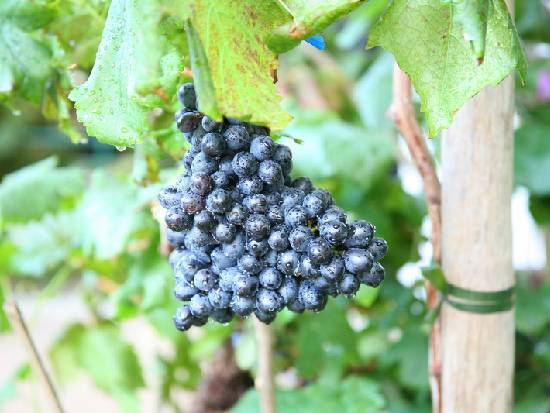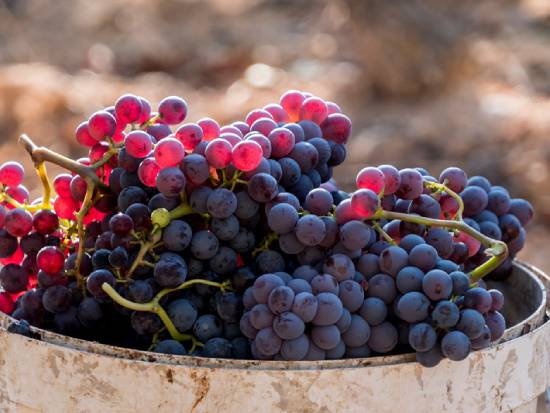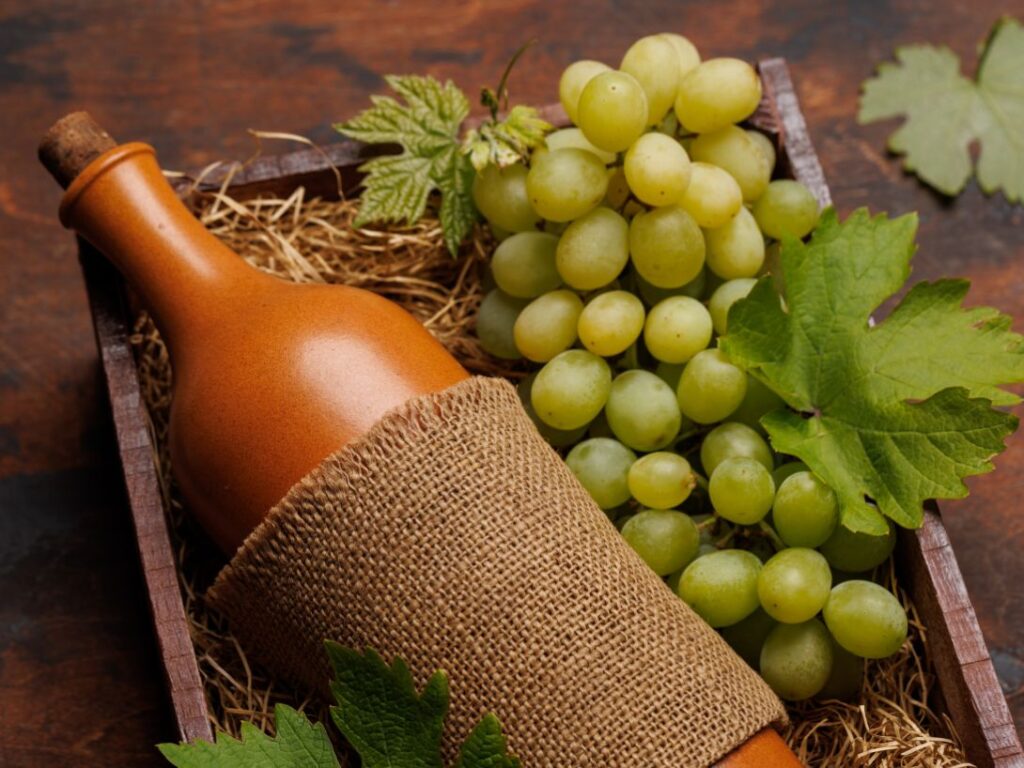
Nestled in the rugged landscape of Catalonia, Priorat is a region well-known for its exquisite collection of wines that appeal to both connoisseurs and casual drinkers.
This blog is an exploration of Priorat’s grape varieties and winemaking techniques, which will help you learn the essence of what makes this region’s wines so unique. From the revered Garnacha Tinta and Samsó to the symphony of flavors brought forth by authorized varieties and the elegance of its whites, let’s discover the tradition, innovation, and passion that define Priorat’s winemaking heritage.
When people think of Priorat, they often picture the bold and full-bodied red wines that the region is famous for. These reds are celebrated for their deep flavors, complexity, and unique minerality lent by the region’s distinctive Llicorella soils. However, within this red-dominated landscape, the amazing white wines of Priorat are sometimes overlooked. The whites of Priorat are characterized by their aromatic complexity, balanced acidity, and captivating minerality that mirror the region’s reds.
The Star Grape Varieties- Garnacha Tinta and Samsó (Cariñena or Carignan)
The heart of Priorat’s red wine heritage lies in two highly regarded grape varieties: Garnacha Tinta and Samsó (also known as Cariñena or Carignan in the local language.) These grape types represent more than just fruit; they embody the essence of Priorat’s winemaking culture, reflecting the region’s history and terroir.
Have you ever had the chance to taste a wine so steeped in tradition?
In Priorat, these two grape varieties are distinguished as “recommended” varieties. This special status indicates the significance of capturing the essential character of the region’s wines. They are super important in Priorat and have to be in most of the wines to make them truly special.
If a wine wants to show off where it is from in Priorat, it needs to have at least 60% of these two grapes.
It is like a secret handshake that says, “Yes, I’m from this amazing place.”
Let’s Look at Authorized Varieties that Bring a Symphony of Flavors
Priorat has a whole bunch of other grapes that add all sorts of flavors and colors to the wines. There is a wide variety of special kinds of grapes here that make the wines interesting and tasty. There’s Garnacha Peluda, which is called “hairy Grenache” because its leaves have tiny little hairs.
It sounds funny, but it makes some great wine! Isn’t that unique?
Then, there are also famous grape varieties from around the world, like Cabernet Sauvignon, Cabernet Franc, and Syrah. They mix in with local favorites such as Ull de Llebre (that’s another name for Tempranillo) and Picapoll Tinto. It is like having guests from all over come to a party, each bringing their flavor.
Each type of grape adds its own special taste to the wine, just like adding different instruments makes music more fun to listen to. Imagine if you could taste a song, with each grape adding a note that plays together in harmony.
That’s what drinking wine from Priorat is like!
The Elegance of White Wines in Priorat
The area isn’t just about the red wines. In the captivating world of Priorat’s white wines, a delightful array of grape varieties allows winemakers to express the unique terroir of this Spanish region. Garnacha Blanca and Macabeo are like the leaders of the pack, setting the stage for some cool and different tastes. They thrive in the region’s unique climate and terroir, shedding their typically passive character to reveal a surprising depth and finesse in these wines.
Besides, many other white varieties contribute to the diversity and richness of Priorat’s white wine portfolio. You might get a sip that reminds you of sweet honey, thanks to the Pedro Ximénez grape, or maybe a taste that’s like smelling a bunch of flowers, all thanks to the Viognier grape. It is like each bottle has its own story to tell, and every sip lets you taste a bit of the adventure. Chenin Blanc, Muscat of Alexandria, Muscat Blanc à Petits Grains, and Xarello (locally called Pansal) are also part of the white wine grape palette, each adding its unique profile to the wines. For instance, Xarello is praised for its outstanding quality and adaptability to the region, even though it is relatively rare.
Despite their scarcity, the white wines of Priorat are gaining recognition for their quality and distinctiveness. Winemakers in the region are increasingly dedicating resources to the production of white wines, experimenting with blends and single-varietal bottlings that showcase the potential of white grapes in this predominantly red wine territory.
So, next time you try a white wine from Priorat, consider the different grapes that went into making it. It is like they are all coming together to put on a show for your taste buds.
Engage with the Essence of Priorat
As you explore the world of Priorat wines, consider the land’s rugged terrain, its slate-laden soils, and the hands that tend to these precious vines. Each grape variety plays its part in crafting wines of unparalleled depth and character.
Have you ever pondered the journey from vine to glass, the myriad decisions and acts of care that shape a wine’s final bouquet? With their blend of tradition and innovation, Priorat’s winemakers invite you to explore this journey through their diverse and exquisite wines.
In your next sip of Priorat, whether a robust red or an elegant white, listen for the echoes of the land, the heritage, and the people that make this region so special. Each glass is more than just a wine; it is a conversation with history, nature, and the art of winemaking.
As you reflect on the rich tapestry of grape varieties that adorn the hills of Priorat, consider the stories they tell and the flavors they impart. Which variety intrigues you the most? Is it the bold character of Samsó, the subtle elegance of Garnacha Blanca, or perhaps the exotic allure of Moscatel de Grano Menudo?
Essential Facts About Winemaking in Priorat
The Unique Terroir of Priorat
Priorat’s winemaking is highly influenced by the region’s unique geography and soil composition. The area is characterized by steep hills and terraces, which make vine cultivation and harvesting quite challenging, and thus, often done by hand. This terrain, combined with the low yields from old vines, enhances the premium quality and price of Priorat wines.
The Llicorella soil is distinctive, composed of slate and mica, which forces the vine roots to go deeper in search of water and nutrients, adding a notable mineral quality to the wines. The diverse micro-climates within the small area of Priorat, ranging from extreme continental to the influences of different winds, further contribute to the varied and distinct flavor profiles of its wines.

Priorat's Wine Classification System
Priorat is a wine region that has been awarded the prestigious DOQ (Denominació d’Origen Qualificada) status, which signifies its dedication to producing high-quality wines. To showcase the unique features of its wines, the region has created a comprehensive vineyard classification system. This system includes “Vins de Vila” (village wines) that highlight the nuances of different parts of Priorat.
Additionally, there are “Vins de Paratge,” “Vinya Classificada,” and “Gran Vinya Classificada,” which represent wines from highly esteemed and narrowly defined vineyards. These classifications are based on multiple factors, such as the age of the vines and the distinctive characteristics of each vineyard plot. They emphasize the individuality and superior quality of the wines produced in Priorat.
Let’s Peek into the Winemaking Practices
The winemaking process in Priorat involves a combination of tradition and regulation, particularly when it comes to aging the wines.
But have you ever wondered how these wines develop such depth and complexity?
There are specific categories recognized in the region, such as Criança, Reserva, and Gran Reserva, that come with clear guidelines on how long the wine should mature in oak barrels and further age in the bottle. For example, Criança wines require a minimum of 6 months in oak and 18 months in the bottle, while Reserva wines require at least 12 months in oak and 24 months of bottle aging. Gran Reserva wines, on the other hand, require 24 months in oak and another 36 months in the bottle to reach their full potential.
But here’s where it gets interesting!
6. Gramona: Where Each Bubble Tells a Story

Many wineries in Priorat adopt a “vino de guarda” approach, which means “wine for keeping.” They prefer to age the wine for an extended period in oak barrels to enhance its complexity and depth. This technique is not strictly defined by the minimum aging periods of the traditional categories and often results in wines that are perfect for long-term storage. As a result, these wines evolve gracefully over time, developing rich flavors and aromas.
How do you think this extra time in oak transforms the wine?
The result is a range of wines that not only adhere to the high standards set by the DOQ classification but also offer a personal touch from the winemakers, making each bottle a unique expression of Priorat’s winemaking heritage.
The result is a range of wines that not only adhere to the high standards set by the DOQ classification but also offer a personal touch from the winemakers, making each bottle a unique expression of Priorat’s winemaking heritage.
Have you ever tasted a Priorat wine that lingered in your memory long after the last sip? What was it that made it stand out?
If you want to elevate your wine experience and dive deeper into the world of Priorat’s exquisite wines, visitWine Fantasy Barcelona and explore a curated selection of the finest wines from this renowned region. Whether you’re a seasoned connoisseur or new to the wine scene, we offer something for every palate.

